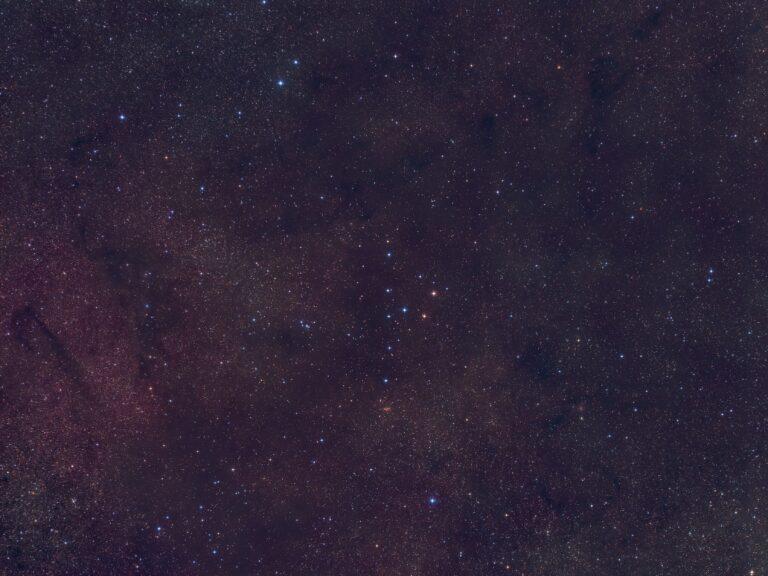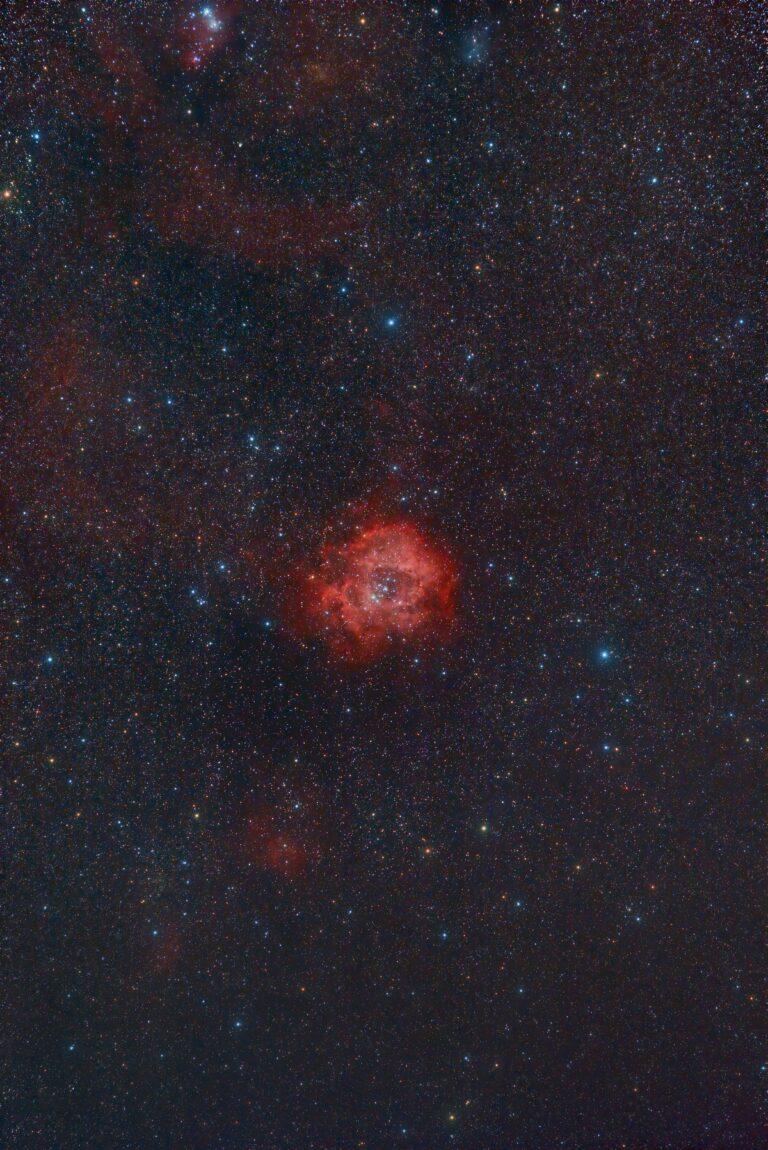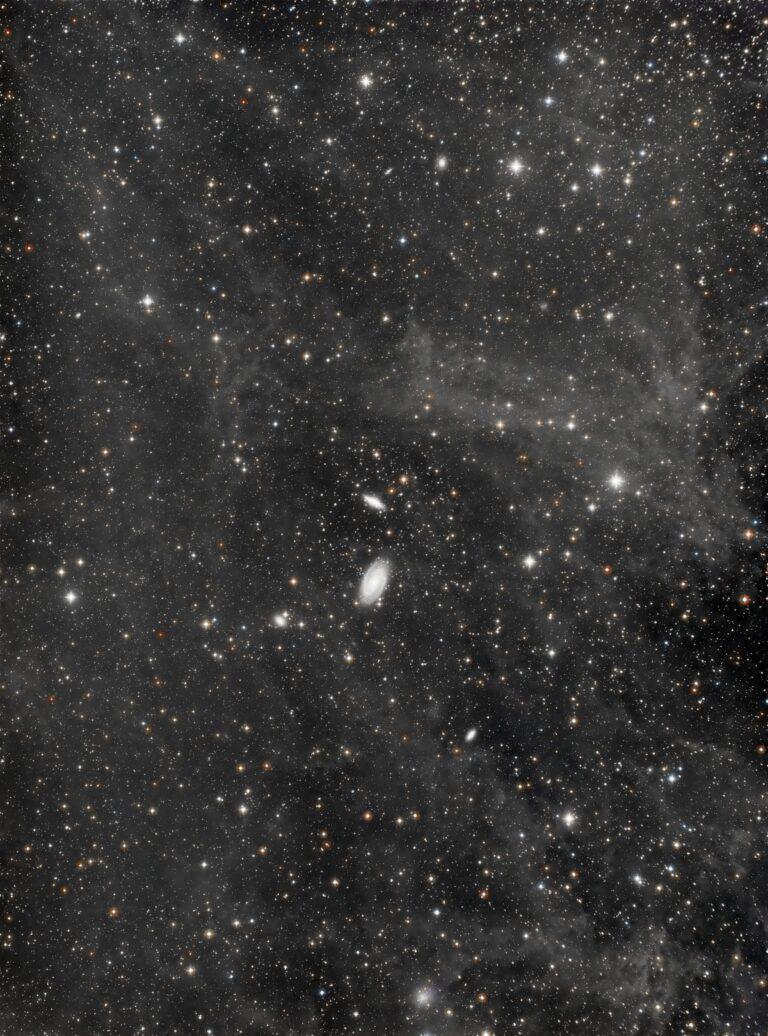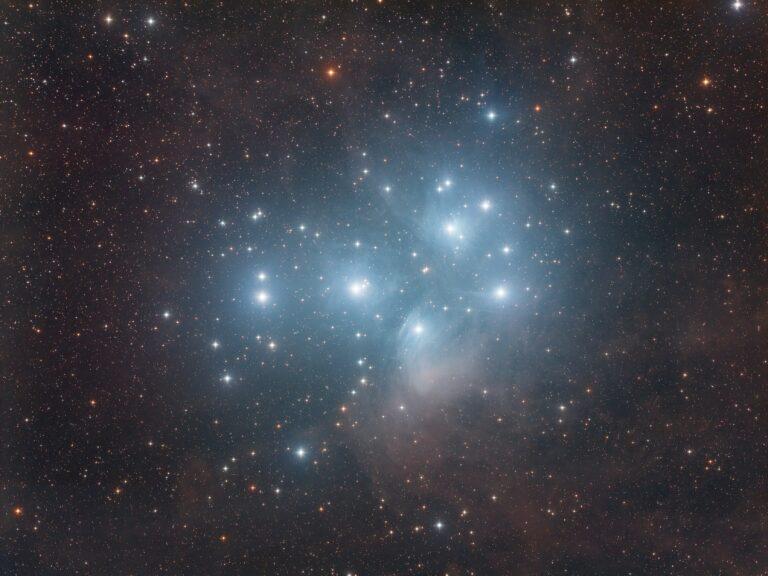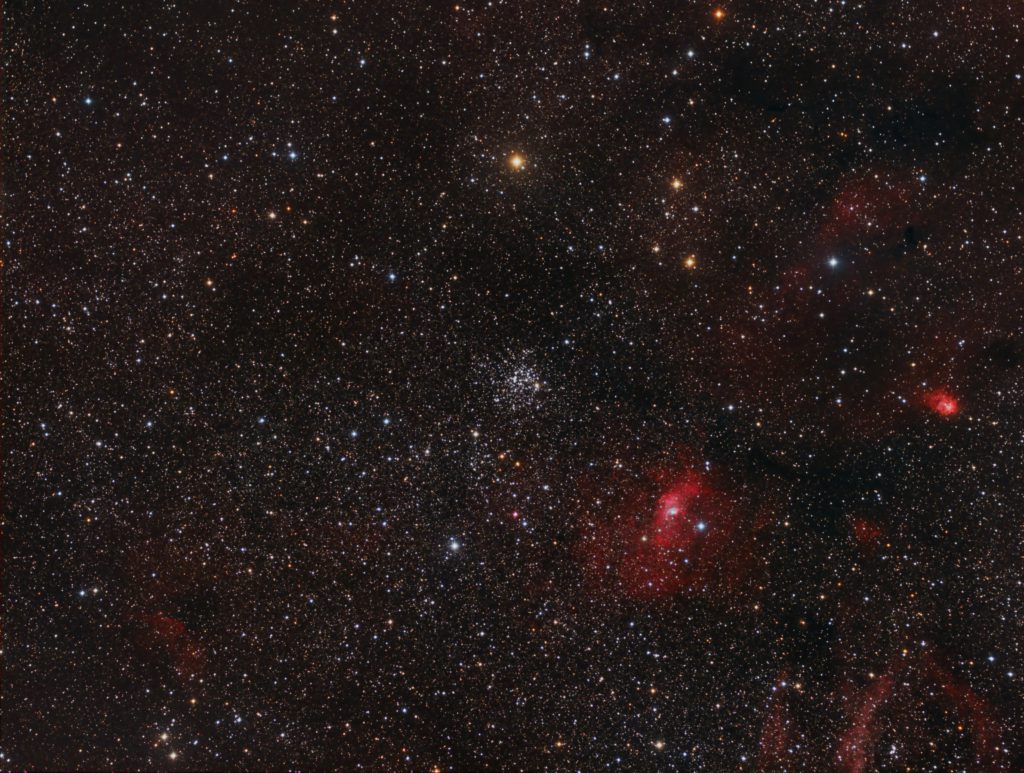Collinder 399 or Brocchi’s Cluster is offered nicknamed “The Coathanger” for its striking resemblance to that wardrobe item! If you look at the stars in the middle of the image and it looks very much like a coathanger on its side. It is located within the constellation of Vulpecula – The Fox – within a larger asterism called The Summer Triangle. The Coathanger is a chance, line-of-sight effect and the stars that form the appearance of the coathanger are not physically associated with each other at all and range from 350 to 2300 light years in distance. The stars are backdropped against the vast clouds of glowing hydrogen that dominate the spiral arms of the Milky Way galaxy. The Coathanger in Vulpecula Image Technical Data Uncompressed version of the image is here (opens in new tab).Image captured in my backyard in Nottingham, UK on Sunday 20th September 2020. I used…
Rosette Nebula In Very Wide Field Image taken with a Samyang 135mm DSLR lens and QHY268C Colour CMOS camera in January 25th 2023 when high to The South. A total of 30 x 120s exposures at F4. I used NINA software for image acquisition and processed in PixInsight. I wanted to set the Rosette in a very wide field so as to see the surrounding nebulosity. I have imaged The Rosette Nebula before with a FSQ85 telescope which can be found here. Annotated version of the nebula Finder Chart
The M81 and M82 galaxies in Ursa Major showing the background Integrated Flux Nebula. These are a well known and popular pair of galaxies and can be seen with binoculars. I’ve imaged them here in a very wide field with a DSLR camera lens – the Samyang 135mm connected to a G2-8300 CCD camera and filter assembly using Astrodon LRGB filtersThe cloudy dust that is visible is not passing cloud! Rather, it is the extremely faint dust and gas that exists in the space between the galaxies – in intergalactic space. Hence it is called the Integrated Flux Nebula or IFN. It is extremely faint and is only visible with very long exposures and integration times. Careful processing is needed not to inadvertently cut it out of the image. M81 and M82 and IFN Technical Data Imaged in my back yard in Nottingham in March 2020 with Samyang 135mm and G2-8300…
The magnificent Pleiades, known to many as the Seven Sisters, is an open cluster in the constellation of Taurus. The Pleiades have been known since the dawn of antiquity and even some cave paintings from 30000 years ago depict them on cave walls. The cluster is 442 light years away and they are about 20 light years across. The exact distance has been a source of debate amongst astronomers for many years but the matter was recently settled using parallax data from the Gaia satellite. Technical Data Imaged with Takahashi FSQ85 refractor and G2-8300 CCD camera with Astrodon E-series RGB filters. It consists of 20 x 300 second exposures in each of those filters to give over 90 minutes in each of the three channels for a combined integration of about four and a half hours. As is normal with any type of cluster, I did not bother with a…
M52 is a fabulous open star cluster in Cassiopeia. It is set against a huge amount of nebulosity that spans across the constellations of Cassiopeia and Cepheus. In this image The Bubble Nebula can be seen at the four o’clock position with respect to M52 and many other objects in the Sharpless Catalogue of nebulae are also visible. These are detailed in the annotated version of the image below. The square red box on the finder chart on the right represents the image.Full resolution image here (opens in a new tab). Technical Information Imaged from my backyard in Nottingham, UK on 28 November 2021 with a FSQ85 refractor and a Moravian G2-8300 cooled CCD camera with Astrodon HaRGB filters on my MESU200 mount guided with OAG.All image data is binned 1×1: Note I do not capture a separate luminance when I bin all of the data channels is 1×1 in…

